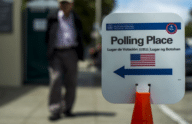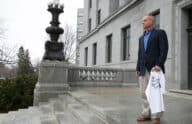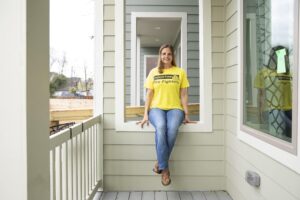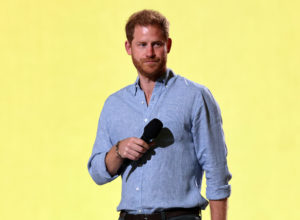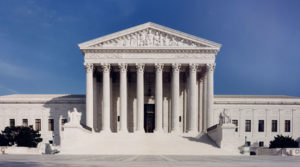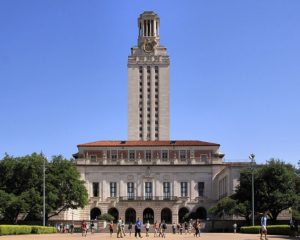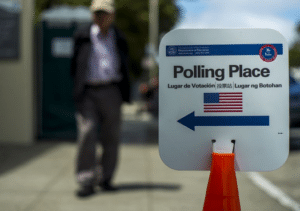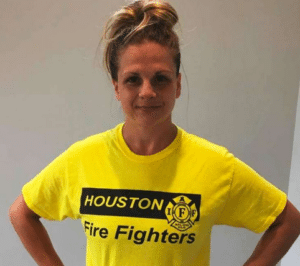The Houston Chronicle: Free speech doesn’t pause on Election Day, end the Texas voting dress code
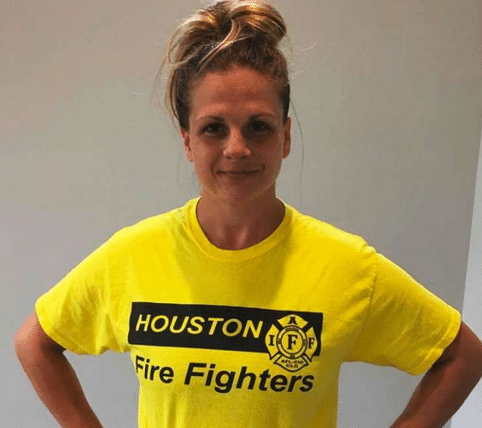
Election season is a time when Americans express their deepest beliefs. Yet polling place dress codes put government bureaucrats in charge of which views voters can express on their T-shirts and hats while they cast their ballot.
The First Amendment protects an individual’s right to hold her beliefs, and to share them with others. Yet laws banning expressive shirts and hats at the polling place are premised on the idea that others need to be protected from offense, or worse, persuasion.
Texas has such a dress code.
Although many of us would think of “electioneering” as actively campaigning for a candidate through door-to-door canvassing, giving speeches and the like, the Texas electioneering laws go much further. They make it a criminal offense for voters to wear a T-shirt or a hat that a poll worker considers “electioneering” for or against any candidate, measure or political party — past or present.
This law has resulted in many unpleasant incidents for Texans seeking to cast their vote. In October 2018, a Houston poll worker ordered Jillian Ostrewich, a self-described “fire wife,” to turn her “Houston Firefighters” T-shirt inside out before she could enter the polling place. In Bulverde, in 2016, a 55-year-old Donald Trump supporter was arrested for wearing a “Basket of Deplorables” shirt when he tried to vote.
This election season promises to be no different. With tens of thousands of election workers making on-the-spot judgment about which T-shirts counts as electioneering, voters wearing anything from Make America Great Again hats, Black Lives Matter pins, NRA apparel, Reagan-Bush ‘84 shirts or “I’m with her” shirts, among many others, could be forced to censor their expressive apparel on the day when their political expression matters most.
A law that allows for tens of thousands of poll workers to make subjective decisions about what is and isn’t legal subverts the rule of law.
It is not surprising, then, that prohibitions on voter apparel have already faced legal challenges from voters. My colleagues and I at the Pacific Legal Foundation are representing Ostrewich in her current fight to restore the free speech rights of Texans and invalidate Texas’s voter dress code. We filed a motion for summary judgement last month and earlier this year, the court denied all of the motions to dismiss from the government.
We’re drawing on the precedent set in our 2018 Supreme Court victory in Minnesota Voters’ Alliance v. Mansky. That case challenged Minnesota’s ban on political apparel at polling places and clarified that voters have a First Amendment interest in expressing their core political beliefs while they cast their ballot. If the state seeks to ban something as innocuous as a shirt or hat, it needs a reasonable justification for doing so.
States generally justify their T-shirt bans on the effect of the shirt on others. Yet it’s important to remember that free speech protects the right of the individual to express her beliefs. It does not protect the right of the collective to be unmoved and unoffended by them. Ostrewich’s case seeks to restore free speech to its individualist roots.
There are practical considerations, too.
The 2020 election season is contentious enough without enforcing nonsensical laws against hats and T-shirts. It’s time to turn down the heat by getting government officials out of the job of playing fashion critic. That would be a win for citizens, who would be empowered to exercise their free speech rights, reflective of their individual consciences, without fear of harassment by poll workers. And it would also be a win for those same poll workers, who presumably would relish the opportunity to divert their focus from voter attire to dealing with the unprecedented challenges of this election cycle.
And best of all, it would be a win for the Constitution and for our long tradition of free speech. That should be one election season outcome we could all celebrate.
This op-ed was originally published by The Houston Chronicle on October 29, 2020.


